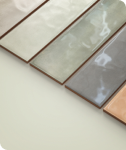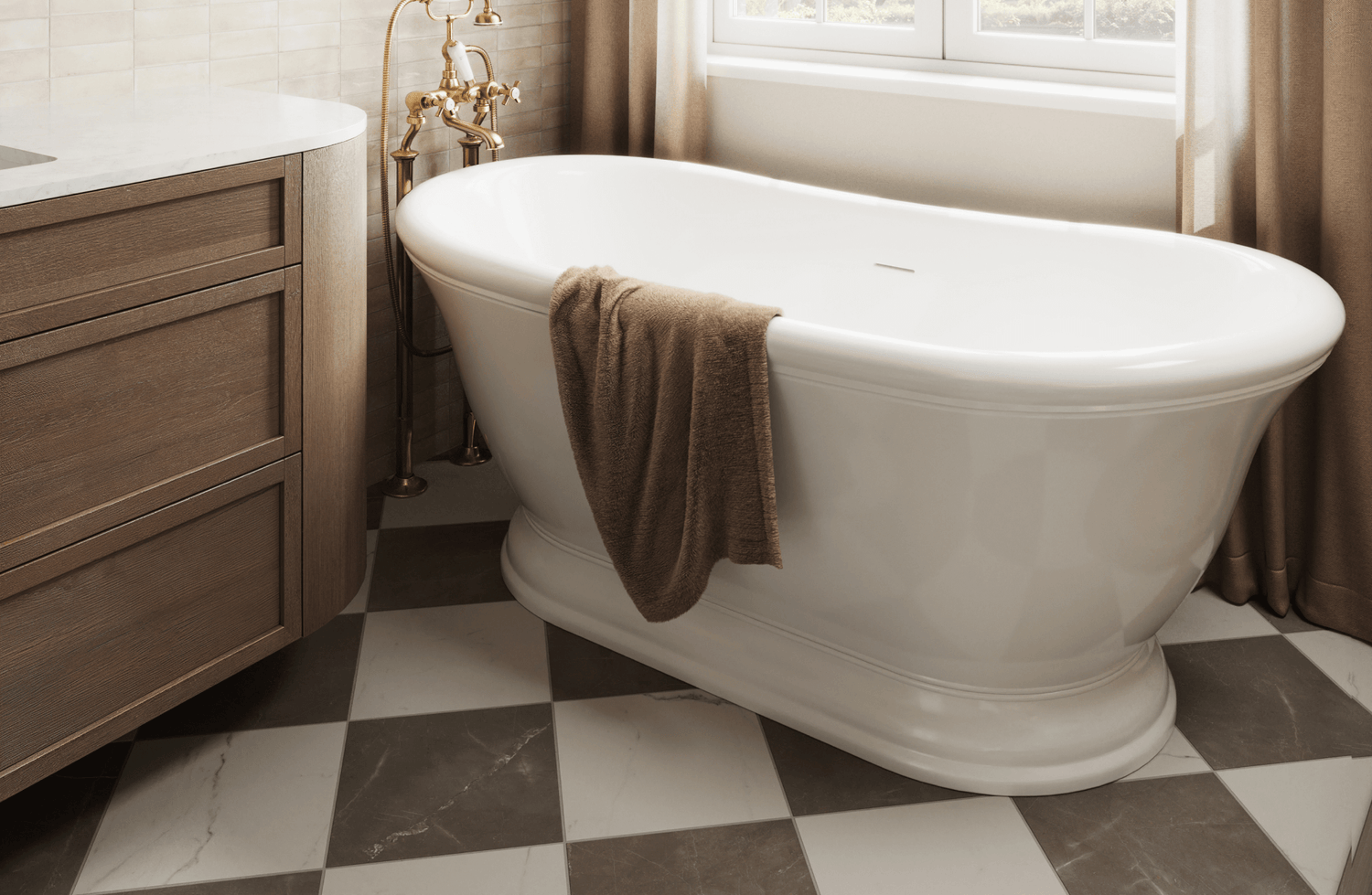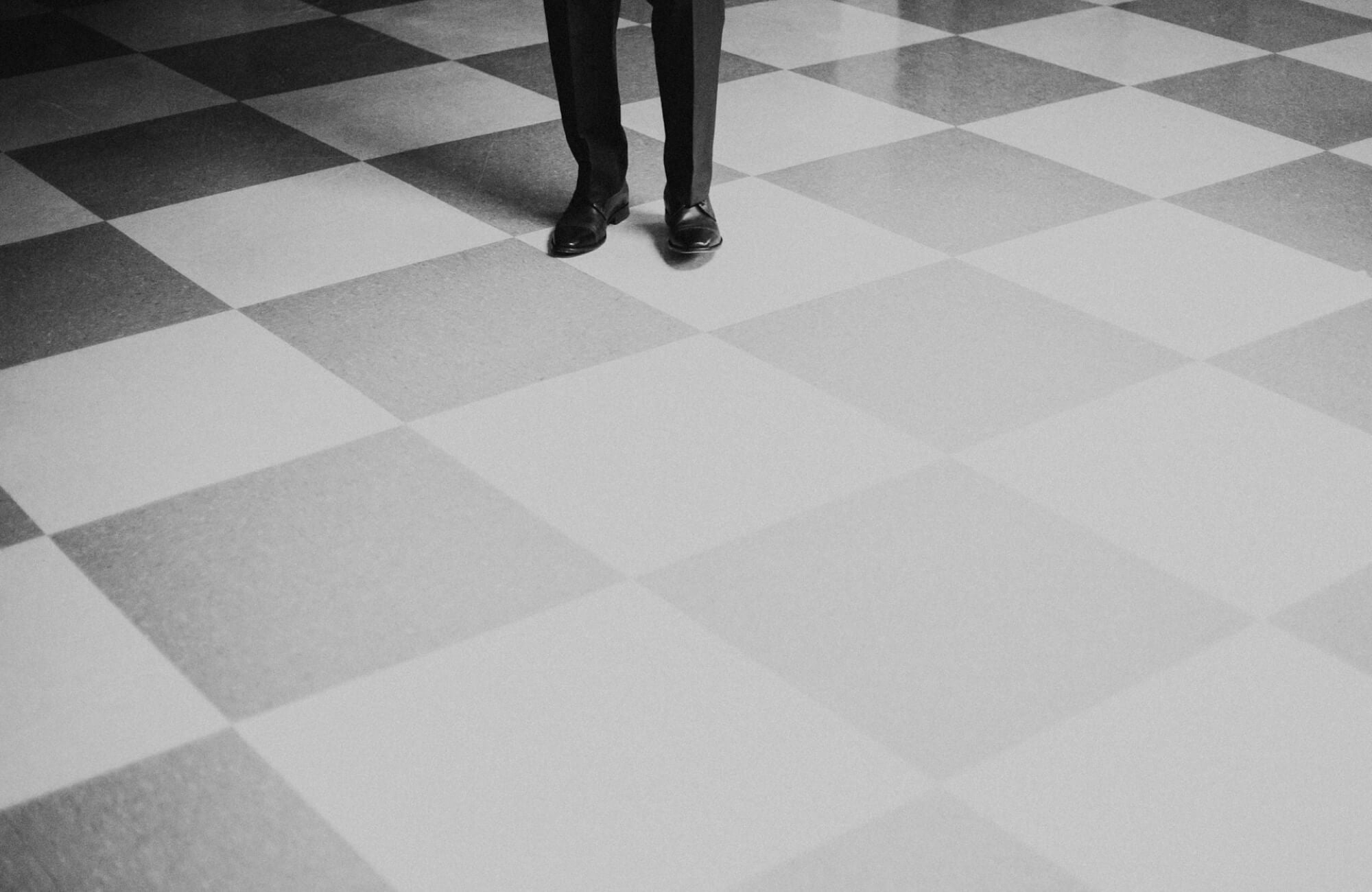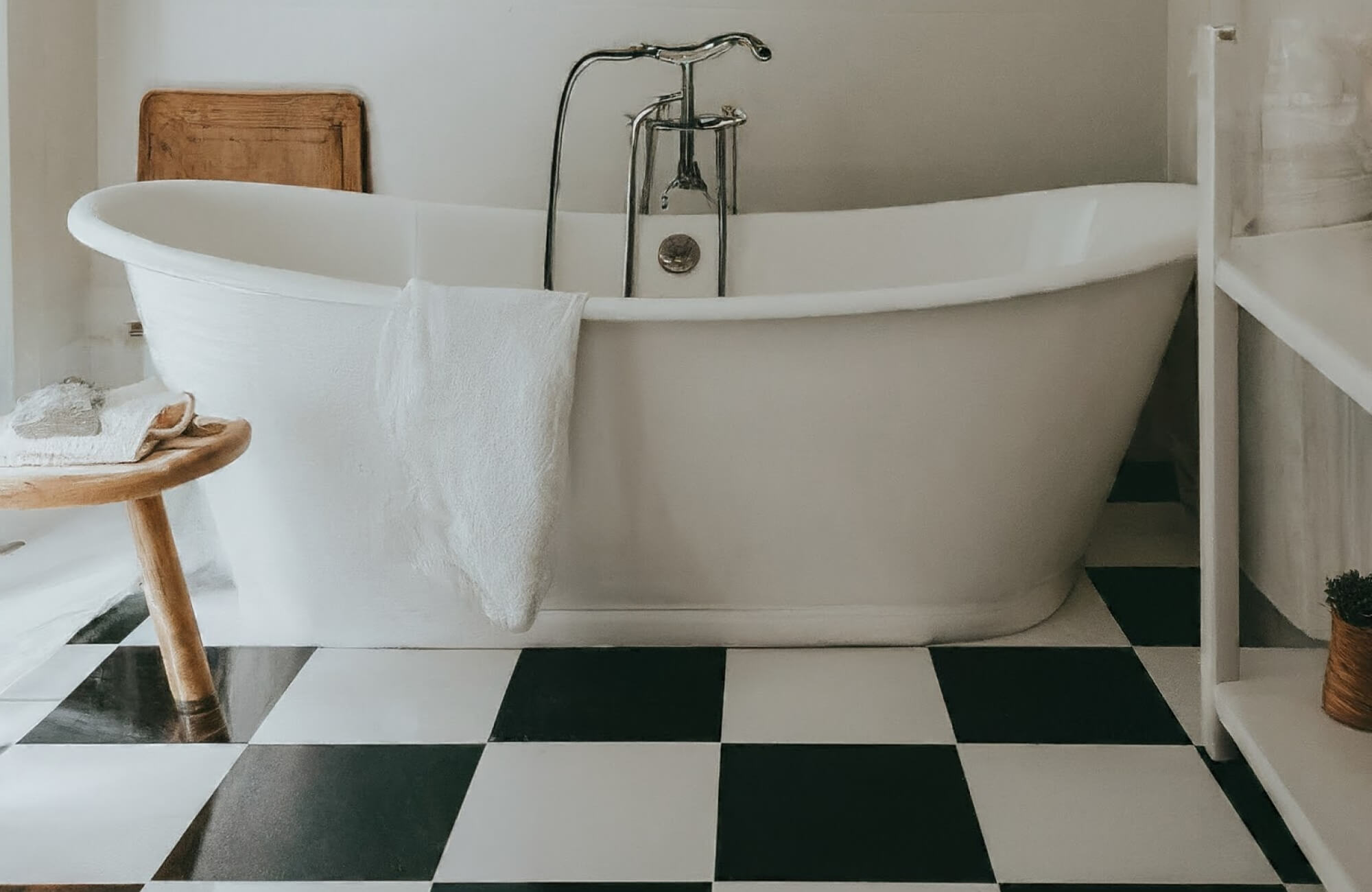Checkerboard tiles, a timeless design element, have been a popular choice in flooring for centuries. Known for their distinctive, alternating color pattern, most commonly black and white, these tiles add dynamic style to any space. Their versatility is evident in cozy homes, bustling commercial areas, and even outdoor settings, making them a widespread favorite. Given their extensive use, checkerboard tiles must possess exceptional durability to withstand the wear and tear of various environments. In this article, we’ll explore the factors that contribute to the longevity of checkerboard tiles, highlighting why they continue to be a lasting choice in flooring.

Exploring Durable Material Options for Checkerboard Tiles
Understanding the true durability of checkerboard tiles starts with examining the materials used to create them. Each material choice directly impacts a tile’s lifespan, maintenance requirements, and suitability for different environments.
Ceramic Tiles as a Popular Choice for Interior Design
Ceramic tiles are a classic choice for checkerboard patterns, especially in residential spaces. Made from clay and kiln-fired at moderate temperatures, ceramic offers a balance between affordability and everyday durability. These tiles are well-regarded for their resistance to scratches and stains, making them ideal for living rooms, kitchens, and hallways where daily wear is expected.
Another advantage of ceramic tiles is their ease of installation, particularly appealing to DIY homeowners. Their flexibility in cutting and shaping allows for creative pattern layouts, while their wide range of styles, colors, and finishes makes it easy to achieve a traditional checkerboard look at an accessible price point.
While ceramic holds up well under typical household conditions, it is less water-resistant than porcelain and more prone to chipping when used as flooring. Still, for homeowners seeking a stylish, long-lasting solution that fits within a reasonable budget, ceramic checkerboard tiles remain a strong contender.
Enhanced Durability with Porcelain Tiles
Porcelain tiles elevate the durability of checkerboard floors, making them a top choice for both residential and commercial settings. Crafted from finer clay and fired at significantly higher temperatures than ceramic, porcelain is denser, harder, and far less porous. Its non-porous character not only makes porcelain highly resistant to water absorption but also gives it excellent frost resistance, making it ideal for moisture-prone areas like bathrooms, kitchens, and even outdoor spaces exposed to freezing temperatures.
Because of this resilience, porcelain tiles retain vibrant colors and intricate patterns over time, even under heavy use. A prime example is Edward Martin’s Blair 24x24 Checkerboard Polished Porcelain Tile in Oniciata Grey and Volakas White, as displayed in the picture above. It combines a refined, polished finish with robust moisture resistance, stain protection, and strength against environmental stress. Its dense structure and elegant design also make it perfectly suited for spaces that demand both style and enduring performance.
Although porcelain typically comes at a higher cost than ceramic, its longevity, versatility, and superior resistance to moisture and frost make it a worthwhile investment, particularly in areas where durability is paramount. Porcelain’s ability to mimic natural stone or hardwood finishes also opens endless design possibilities for both classic and contemporary interiors.
Modern Elegance of Natural Stone
For those seeking a luxurious, one-of-a-kind look, natural stone tiles like marble, granite, and slate offer unmatched beauty and strength. Granite, known for its exceptional scratch resistance, is particularly suited for busy spaces such as hotel lobbies and outdoor patios. Meanwhile, the inherent color and texture variations of natural stone ensure every checkerboard installation is truly unique.
However, natural stone demands a higher level of maintenance. Regular sealing is required to protect against stains and moisture damage, and softer stones like marble are more susceptible to etching and surface scratches. Despite the upkeep, when properly maintained, natural stone checkerboard floors can last for decades, serving as a lasting investment in elegance and durability.
Vinyl Tiles and Their Versatile Appeal
Vinyl tiles present a practical and flexible option for checkerboard designs, particularly appealing for spaces that demand resilience and easy care. Modern vinyl effectively replicates the look of more expensive materials like hardwood or natural stone, offering a cost-effective way to achieve an upscale aesthetic.
While vinyl boasts strong water resistance and low maintenance needs, it does have some limitations. It can release volatile organic compounds (VOCs), which may affect indoor air quality, and it remains vulnerable to cuts, scratches, and damage from extreme temperatures. Careful placement and protective strategies can help maximize the lifespan of vinyl tiles, making them a convenient choice for moderate-use environments.

Installing Checkerboard Tiles for Long-Lasting Results
Proper installation plays a crucial role in ensuring the durability and longevity of checkerboard tiles. The method used can significantly impact the tiles' adhesion, the quality of the grout, and the overall structural integrity of the flooring. To achieve the best results, it’s important to always follow manufacturer recommendations for installation and maintenance, and when possible, consider hiring a professional installer to ensure a flawless, durable finish.
Choosing the Right Installation Method for Checkerboard Tiles
The long-term success of checkerboard tile installations largely depends on choosing the appropriate installation method for the space. Among the most reliable options is mortar-based installation, a time-tested technique ideal for outdoor spaces or moisture-prone environments like bathrooms and patios. This method uses a blend of cement, sand, and water to create a strong, lasting bond between the tiles and the substrate. Mortar-based installation also allows for fine adjustments during the process, essential for maintaining the precise alignment that checkerboard patterns require. Its resilience in harsh conditions makes it a top choice for areas that experience frequent use or temperature fluctuations.
For indoor spaces, adhesive-based installation offers a faster and cleaner alternative. Pre-mixed adhesives simplify the process, making it an attractive option for dry, interior environments. However, this method may not provide the same durability in high-demand settings, so it’s crucial to select adhesives suited to the tile material and expected usage. Heavier materials like natural stone, for example, require specialized adhesives to ensure lasting stability.
For quick and easy projects, self-adhesive tiles offer convenience with pre-applied sticky backing that eliminates the need for mortar or separate adhesives. While this method is simple and mess-free, it typically offers less durability and is best reserved for low-use areas or temporary designs where long-term performance is not a primary concern.
Common Installation Mistakes
Even with the right materials and methods, certain mistakes can undermine the durability of a checkerboard tile installation. Improper substrate preparation, like failing to ensure a clean, level, and structurally sound surface, can lead to poor adhesion and future cracking. Similarly, incorrect application of mortar or adhesive, whether too thin or unevenly spread, weakens the bond and increases the risk of shifting or damage. Poor grout quality is another frequent issue; grout must be properly applied and sealed to prevent water infiltration and preserve the structural integrity of the tiles. Additionally, inaccurate tile spacing or neglecting to correct uneven surfaces can create stress points that eventually cause cracking or chipping in the checkerboard design.
Tips for Ensuring Proper Installation
Achieving a durable checkerboard floor begins with thorough preparation. Carefully clean, level, and repair the substrate before installation to create a stable foundation. Using high-quality products, whether tiles, mortar, adhesives, or grout, further strengthens the installation against wear and environmental factors. Finally, proactive maintenance, such as routine inspections for early signs of damage and timely repairs, will help protect the checkerboard flooring’s appearance and structural integrity for many years to come.
How to Maintain Checkerboard Tiles for Lasting Beauty
The beauty and durability of checkerboard tiles depend not only on the quality of the materials but also on consistent, proper maintenance. Regular upkeep plays a critical role in preserving both their vibrant appearance and structural integrity. While these guidelines provide a strong foundation, always refer to the manufacturer’s recommendations to achieve the best results and maintain your tile warranty.
Regular Maintenance: Key to Durability
Ongoing maintenance is essential to keep checkerboard tiles looking their best over time. Regular sweeping or vacuuming helps remove dirt and grit that can gradually wear down the surface, while prompt cleanup of spills prevents potential staining. For daily care, pH-neutral cleaners are ideal for natural stone, while mild detergents work well for ceramic and porcelain. Applying sealants to porous materials, such as natural stone or vinyl, further protects against moisture and wear. Following a scheduled maintenance routine not only sustains the tiles' aesthetic appeal but also significantly extends their lifespan.
Cleaning Protocols for Varied Materials
Different tile materials require tailored cleaning approaches to maintain their finish and prevent damage. For ceramic and porcelain tiles, mild detergents paired with chamois-type mops are effective, and abrasive cleaners should be avoided to prevent dulling the surface. Natural stone, on the other hand, demands extra caution, requiring only pH-neutral cleaners to avoid etching and sealant damage. Acidic substances like vinegar should never be used on marble, limestone, or slate. Vinyl tiles respond best to warm water and mild soap for everyday cleaning, with specialty vinyl cleaners reserved for tougher stains. Prompt attention to spills and minor scratches, using products like tile polish or touch-up kits, also helps keep checkerboard tiles in top condition.
Tailored Maintenance Schedules
How often you clean and maintain your checkerboard tiles depends largely on the environment. In busy commercial spaces, daily sweeping and weekly mopping may be necessary to manage dirt accumulation, while residential areas like kitchens and bathrooms often require less frequent upkeep. Outdoor installations demand more regular maintenance to guard against weather exposure and debris buildup. Adapting your maintenance schedule to suit the space also ensures that the flooring remains both attractive and resilient.
As discussed earlier, porcelain and ceramic tiles are non-porous and can be easily maintained with just a mild, non-abrasive cleaner and water. At Edward Martin, all tiles are fully glazed, which further eliminates the need for sealing, unlike many natural stones. This glazing simplifies upkeep while also boosting durability, making these tiles ideal for busy or moisture-prone areas.

Checkerboard Tile Durability Across Different Rooms
Checkerboard tiles bring undeniable charm to any space, but how well they endure depends largely on the environment where they’re installed. Different rooms present unique challenges, from moisture and heat to heavy daily use, making material choice and preparation even more important.
Choosing Moisture-Resistant Checkerboard Tiles for Bathrooms
Among all areas of the home, bathrooms present some of the most demanding conditions for checkerboard tile installations. Constant exposure to moisture, humidity, and frequent temperature changes requires tiles that can resist water absorption and maintain their integrity over time. In these settings, porcelain checkerboard tiles are particularly well-suited, offering excellent moisture resistance and long-term stability even in steamy, high-use environments.
A standout option is the Leona 12x12 Checkerboard Matte Porcelain Tile in Calacatta and Amani Grey, as shown in the photo above, which combines timeless style with superior performance. Its dense, low-porosity structure stands up beautifully to humidity and daily wear, while its soft matte finish helps reduce slipperiness, making it a practical and elegant choice for bathroom floors.
Alternatively, natural stone options like marble can also be used for a luxurious effect but require sealing and regular maintenance to prevent staining and etching. No matter the material, prioritizing water-resistant tiles and proper installation methods ensures that your bathroom checkerboard floors remain beautiful and durable over time.
Choosing Durable Checkerboard Tiles for Kitchens
Moving into the kitchen, durability becomes equally critical but for slightly different reasons. Kitchens are among the most demanding environments for flooring, with constant exposure to spills, heavy use, and frequent cleaning. Checkerboard tiles here must be highly resistant to stains, moisture, and impacts from dropped utensils or cookware.
Porcelain tiles continue to shine in kitchen settings because of their dense, non-porous composition and ability to handle messes without sacrificing visual appeal. Ceramic tiles can also be a good fit in kitchens with lighter use, but may require a bit more caution against heavy impacts. Choosing durable, easy-to-clean materials ensures that your checkerboard kitchen floor remains vibrant, practical, and stylish for years to come.
Balancing Style and Durability with Living Room Checkerboard Tiles
In living areas, the balance between aesthetics and durability becomes more flexible. These spaces typically experience less moisture and moderate daily use, allowing for greater freedom in material selection. Both ceramic and porcelain tiles are excellent choices, depending on your lifestyle and how much wear you expect.
Ceramic tiles offer broad design versatility and a more budget-friendly option, while porcelain provides additional strength for households with pets, kids, or frequent gatherings. Whichever material you choose, regular upkeep and occasional polishing can help preserve the crisp contrast and timeless beauty that checkerboard floors bring to living spaces.
Long Lasting Checkerboard Tiles for Busy Entryways
Entryways and mudrooms, on the other hand, demand the most rugged flooring options. These hardworking areas must endure heavy use, seasonal dirt, moisture from wet shoes, and abrupt temperature changes, all without losing their appearance or structural integrity.
Porcelain tiles again lead the way, offering superior resilience against tracked-in grit, muddy boots, and daily wear. A stylish and practical option for these spaces is the Leona 24x24 Checkerboard Matte Porcelain Tile in Marfil and Amani Bronze, which pairs a warm neutral and rich brown in a durable matte finish that's ideal for managing the challenges of a busy entrance. Granite checkerboard tiles can also be an excellent solution here, providing a natural, rugged surface that resists scratches and staining. To further protect your flooring, adding simple measures like mats or rugs at entrances can significantly extend the life and beauty of your checkered design, keeping it fresh even in the busiest parts of your home.
To truly appreciate how different checkerboard tile materials and finishes perform across various rooms, it’s helpful to visualize them directly in your own space. Utilize Edward Martin's AR Visualization Tool to explore a wide range of porcelain checkerboard tile options and see how they enhance different environments—from cozy living rooms to high-impact kitchens. This innovative platform effortlessly blends practicality with creativity, helping you find the perfect design match with precision and ease.

How Environmental Conditions Affect Checkerboard Tile Durability
While proper maintenance plays a crucial role in preserving the beauty and longevity of checkerboard tiles, it’s equally important to account for environmental conditions. Factors such as temperature shifts, humidity, sunlight exposure, and heavy use can all influence how well your flooring holds up over time.
Impact of Temperature and Humidity
Temperature and humidity fluctuations present some of the most common environmental challenges for checkerboard tiles. Materials like natural stone and vinyl are particularly susceptible, as extreme temperature changes can cause expansion and contraction, potentially leading to cracking or loosening over time. High humidity levels can similarly compromise tile adhesion, especially if moisture-resistant adhesives aren’t used. For example, natural stone may warp when exposed to prolonged moisture without proper sealing, emphasizing the importance of selecting materials and installation methods that account for environmental stresses.
Sunlight Exposure
Another critical factor to consider is exposure to direct sunlight. Over time, continuous UV exposure can cause fading, and in materials like vinyl, even warping or bending. To preserve the color and structural integrity of checkerboard flooring in sunlit areas, UV-resistant sealants and finishes are essential. Additionally, choosing lighter-colored tiles can help minimize visible fading, as they are generally more resistant to sun damage than darker hues.
A great example is Edward Martin's Palmer 12x12 Checkerboard Raw Porcelain Tile in White and Grey, as depicted in the photo above, which pairs a soft, light-toned color palette with the natural resilience of porcelain. Its raw finish enhances its understated elegance while offering strong resistance to fading, making it particularly well-suited for areas exposed to frequent sunlight.
Regularly inspecting outdoor or brightly lit spaces for early signs of UV wear, along with applying protective finishes as needed, can help preserve the beauty and longevity of your checkerboard tiles over time.
Handling Frequent Usage
Beyond environmental elements, the amount of daily use your tiles endure also plays a major role in their longevity. In busy commercial and outdoor spaces, constant wear can quickly degrade less durable materials. Porcelain tiles, known for their outstanding resilience, are highly recommended for these demanding settings, as they resist scratches, stains, and heavy impacts far better than ceramic or vinyl options. In contrast, lighter-use areas can accommodate a broader range of materials, provided they are supported with protective measures like mats or rugs. Consistent maintenance practices, including regular cleaning and occasional resealing, further reinforce durability under heavy use.
Tips for Environmental Protection
To help your checkerboard tiles withstand environmental stresses, thoughtful preparation and ongoing care are key. Choosing materials based on their exposure levels is a strong first step. Porcelain excels in moisture-heavy and high-use environments, while natural stone thrives with regular sealing in gentler conditions. Applying protective sealants to porous surfaces enhances resistance to stains and moisture, while physical barriers like doormats, area rugs, and furniture pads minimize direct wear. Staying vigilant with routine cleaning and addressing minor chips or cracks early can also prevent small issues from developing into larger problems, helping preserve the beauty and durability of your checkerboard flooring for years to come.
Ensuring the Longevity of Checkerboard Tiles
The longevity of checkerboard tiles relies on careful material selection, precise installation, and consistent maintenance. Choosing durable options like porcelain for high-use areas, following proper installation techniques, and maintaining a regular cleaning routine all contribute to preserving both the beauty and performance of your flooring. Selecting materials suited to your environment and implementing the right care practices also helps ensure your tiles remain a lasting feature in any space.
To make this process easier, Edward Martin offers high-quality 4" x 4" samples that accurately reflect the color and finish of all tile sizes within each collection. These samples provide a clear, true-to-life view of the product, helping homeowners and professionals make confident decisions based on specific environmental conditions and design goals.








